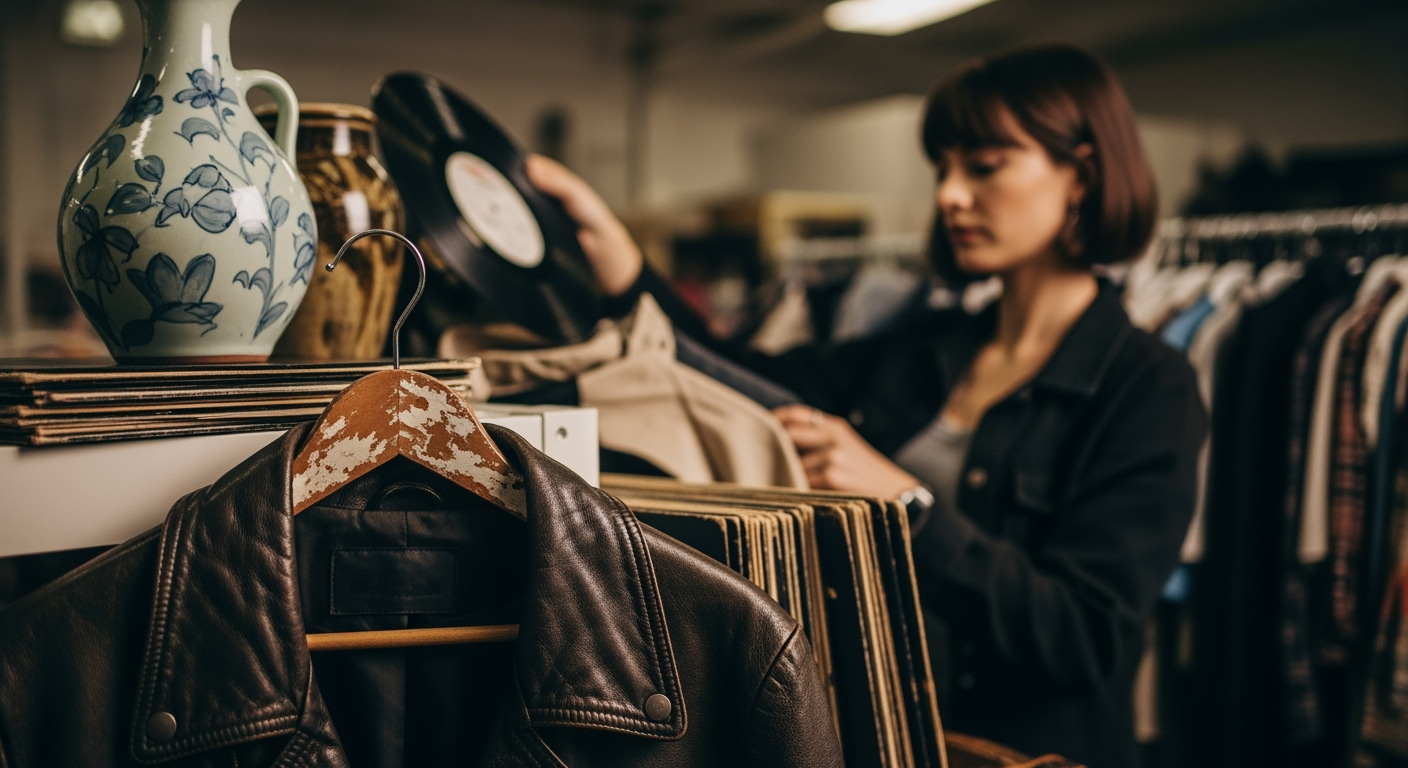Related Articles

Paris Agreement Curbs Worst Warming Scenarios, Yet Global Heating Persists

Global Electricity Crossroads: Renewables Surpass Coal for First Time, Signaling Transformative Energy Shift





Once considered a last resort for the budget-conscious, thrifting has undergone a dramatic transformation, emerging as a potent force in sustainable living, economic empowerment, and personal style. This shift reflects a growing global consciousness, with consumers increasingly prioritizing environmental impact and affordability in their purchasing decisions. What began as a charitable effort to aid the underprivileged has evolved into a mainstream movement, reshaping the retail landscape and challenging traditional consumption patterns.
The roots of secondhand shopping stretch back to ancient times with bartering and repurposing, but organized thrift stores began to appear in Europe and the United States in the 19th century, primarily as charitable initiatives to support those in need. During periods of economic hardship, such as the Great Depression and both World Wars, thrifting became a necessity, emphasizing frugality and resource conservation amidst rationing and scarcity. The mid-20th century saw a cultural shift, with counterculture movements in the 1960s and 70s embracing thrift stores as sources of unique vintage fashion and a rejection of mainstream consumerism.
Today, the secondhand market is experiencing unprecedented growth, driven largely by younger generations like Gen Z and Millennials. These demographics, acutely aware of environmental issues and often facing financial constraints, view thrifting not just as a way to save money but as a conscious lifestyle choice. Statistics underscore this boom: the global secondhand apparel market, valued at $256 billion in 2025, is projected to exceed $350 billion by 2029. In the U.S. alone, the secondhand market is estimated at $56 billion in 2025 and is expected to reach $74 billion by 2029, growing five times faster than traditional retail. A significant 58% of U.S. shoppers purchased secondhand apparel in 2024, with 75% open to or already engaged in such purchases. The accessibility of online resale platforms has further fueled this expansion, enabling a broader audience to participate in the circular economy.
One of the most compelling drivers behind thrifting's modern appeal is its profound environmental benefits, particularly in combating the detrimental effects of fast fashion. The fashion industry is a major polluter, contributing significantly to landfill waste, carbon emissions, and resource depletion. Thrifting directly intervenes in this cycle by extending the lifespan of garments and other goods, thereby reducing the demand for new production.
Each year, Americans discard over 13 million tons of clothing, much of which consists of synthetic materials that take hundreds of years to decompose. Thrifting diverts these items from landfills, with organizations like the Salvation Army preventing millions of pounds of fashion waste annually. By choosing secondhand, consumers reduce the consumption of new resources like water, energy, and raw materials. For instance, manufacturing a single pair of jeans can require approximately 1,800 gallons of water. Thrifting also mitigates chemical pollution associated with textile manufacturing, which often involves harmful dyes, pesticides, and crude oil by-products that contaminate soil, water, and air. Furthermore, by decreasing the need for new production and long-distance shipping, secondhand shopping contributes to a lower carbon footprint, addressing the fashion industry's substantial contribution to global carbon emissions.
Beyond its environmental merits, thrifting offers significant economic advantages and opportunities for personal expression. For consumers, the primary allure often lies in affordability. Thrift stores allow individuals to acquire high-quality items, sometimes even designer brands, at a fraction of their original cost, enabling budget-friendly shopping without compromising on style. Shoppers can save an average of $2,071 per year by purchasing secondhand goods. This financial benefit is particularly crucial for individuals and families managing tight budgets, or those seeking to stretch their income in times of economic uncertainty.
The "treasure hunt" aspect of thrifting fosters creativity and individuality. Unlike mass-produced retail, thrift stores offer a constantly changing inventory of unique, vintage, and eclectic items that allow individuals to cultivate a distinctive personal style and express themselves authentically. This quest for one-of-a-kind pieces resonates deeply with consumers seeking to stand out from homogenous fashion trends.
Moreover, many thrift stores operate as non-profits, supporting local communities through job creation, vocational training, and funding various charitable programs. By patronizing these establishments, consumers directly contribute to local economic development and social welfare initiatives. The rise of online resale platforms has also opened avenues for entrepreneurship, allowing individuals to turn thrifting into a "side hustle" by curating and reselling unique finds.
Despite its numerous benefits, the secondhand market is not without its complexities and challenges. A critical concern is the potential for overconsumption to simply transfer from fast fashion to thrifting. While buying used items is inherently sustainable, an attitude of excessive acquisition, driven by low prices, can paradoxically mimic the "fast fashion" cycle, overwhelming thrift stores with donations at a similar rate to new purchases.
The sheer volume of donations can pose logistical challenges for thrift organizations. Only a fraction of donated clothing, sometimes as little as 10-30%, is actually sold on the retail floor. The surplus often ends up in salvage markets, where much of it is sold overseas to developing countries. This process raises ethical questions about shifting textile waste burdens to other nations and the environmental impact of international shipping. In some cases, even donated items ultimately end up in landfills or incinerators.
Another emergent challenge is the "gentrification" of thrifting. As secondhand shopping gains popularity among higher-income brackets and resellers, concerns have been raised about rising prices and a reduction in the availability of affordable, essential items for low-income communities that historically relied on thrift stores. The practice of "thrift flipping," where items are bought cheaply and resold at significantly higher prices, can exacerbate this issue, potentially creating a barrier for those who need access to inexpensive clothing.
Practical considerations for thrifters also include the fact that items are pre-owned, meaning they may show wear or require cleaning. Shoppers may also face challenges like limited size options, unpredictable inventory, and the need for patience to discover desirable items.
Thrifting has undeniably moved beyond its historical role as a necessity for the less fortunate to become a celebrated facet of modern consumer culture. Driven by powerful currents of environmental awareness, economic practicality, and a desire for authentic self-expression, the secondhand market continues its rapid expansion. From brick-and-mortar stores to sophisticated online platforms, thrifting offers a tangible alternative to the linear consumption model, fostering a more circular economy where products are reused and valued for longer.
As the movement matures, it calls for a more intentional approach from consumers, one that balances the undeniable benefits with an awareness of its emerging challenges. By choosing secondhand thoughtfully, supporting ethical practices, and advocating for sustainable solutions throughout the entire supply chain, consumers can ensure that thrifting remains a powerful tool for positive change, shaping a future where fashion and consumption are both stylish and sustainable.